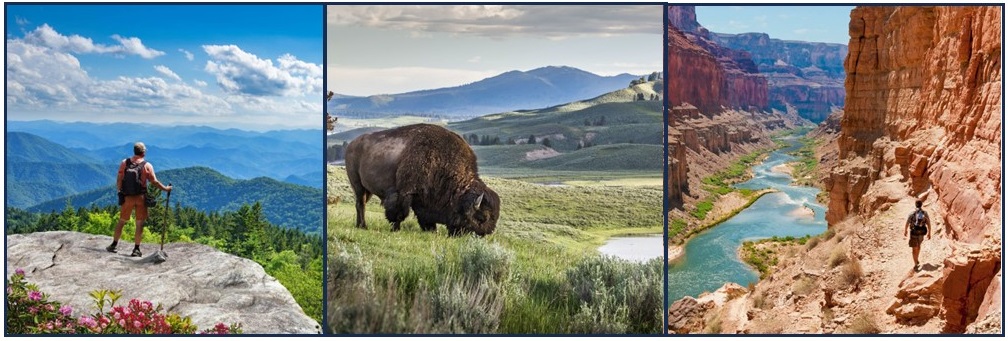
Yosemite. Yellowstone. The Grand Canyon. The Great Smoky Mountains, and so many more.
It’s hard to imagine the United States of America without our national parks. But in the late 19th century, preserving public land in its natural state was a new and provocative idea. It was also too late for many European countries, whose lands had already been fully developed.
It all started when President Abraham Lincoln signed legislation to preserve Yosemite Valley in faraway California for “public use, resort and recreation … inalienable for all time.” Shortly afterward, Yellowstone National Park was created — our nation’s, and the world’s, first wilderness park. Yosemite, Sequoia, Mesa Verde, and Mount Rainier came soon after.
In the early 20th century, we took one huge step backward. San Francisco, in the wake of the 1906 earthquake and fire that devastated the city, campaigned to build a dam in Yosemite’s Hetch Hetchy Valley, one of two iconic glacier carved valleys in the park. More than 200 newspapers nationwide rose in opposition to the idea that a single municipality could take over land that had been “preserved in perpetuity” for all Americans. After extensive and contentious deliberation, however, Congress passed and President Woodrow Wilson signed the Raker Act allowing the dam to be built and Yosemite’s Hetch Hetchy Valley to buried beneath a reservoir.
In 1916, Congress, reflecting on the unprecedented groundswell of public opposition that had taken place during the debate over the Raker Act, passed the National Park Service Act — a law intended to prevent, in large part, any more such intrusions. Subsequent proposals to build dams in Yellowstone in the 1920s and the Grand Canyon in the 1950s were defeated. And while threats to and controversies within our national parks continue, no destruction approaching the scale of damming Hetch Hetchy has since been allowed.
Since that time, the conservation movement has evolved and grown enormously –- fighting ever wider battles to protect the natural world and create a sustainable economy. Today, conflicts over public land extend far beyond our national park system and are often fought over urban parks as well as wilderness areas.
In the 1960s, Rachel Carson’s Silent Spring alerted us to the fact that “better living through chemistry” was very often not so. Shortly thereafter, environmentalists joined forces to effect a nationwide ban on DDT.
In 1969, a horrified nation watched Ohio’s Cuyahoga River catch fire, and political pressure persuaded President Richard Nixon to sign the Clean Water Act. Nixon also signed the Clean Air Act and the Endangered Species Act.
Today, much of the conservation movement is consumed with local, national, and international efforts to stop Earth’s atmosphere from warming due to the combustion of fossil fuels.
Conservation is now integrated in virtually every aspect of our lives. We recycle, and conserve energy and water. We subsidize public transportation and dedicate highway lanes to carpools. We regulate forestry and commercial fishing so that the world our grandchildren will inherit will look like the one we know now — or perhaps even a bit better.
Even as the conservation movement has become so many different things, our national parks are still the envy of the world. Visit them and you will find not only a plethora of your own countrymen, but citizens from countries around the world, many of which did not have the foresight to preserve some of their own very special places.
Still, Hetch Hetchy remains the greatest blemish in our national parks. In 1913, our nation’s lawmakers made a grave mistake. But it can be reversed. Restore Hetch Hetchy is resolved to undo that mistake, and we invite all our fellow citizens to join us in making Yosemite National Park whole again.
— This blog is adapted from a column RHH board Chair Roger Williams wrote on the centennial of the Raker Act’s passage. Restore Hetch Hetchy is celebrating Earth Day with a meeting and public retreat at Hetch Hetchy.
